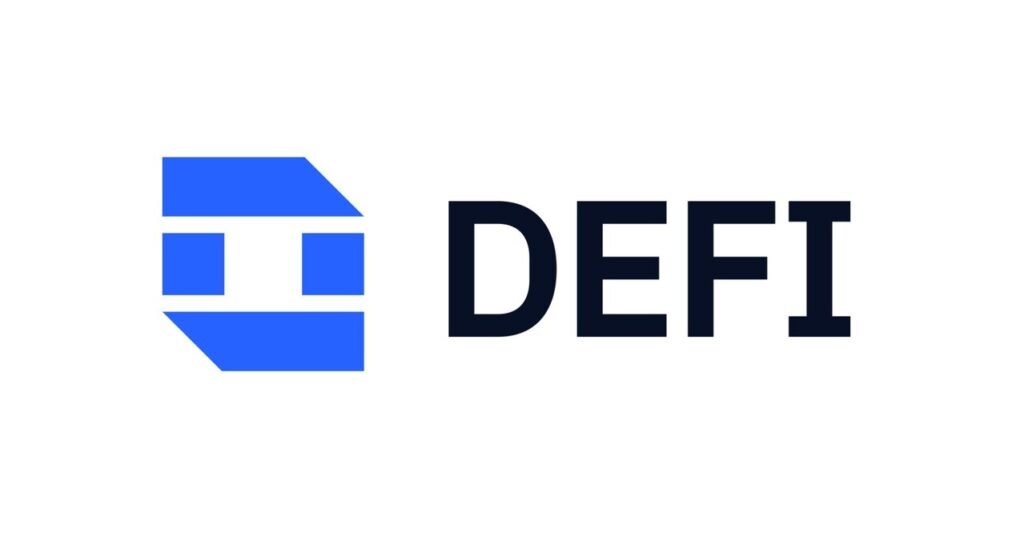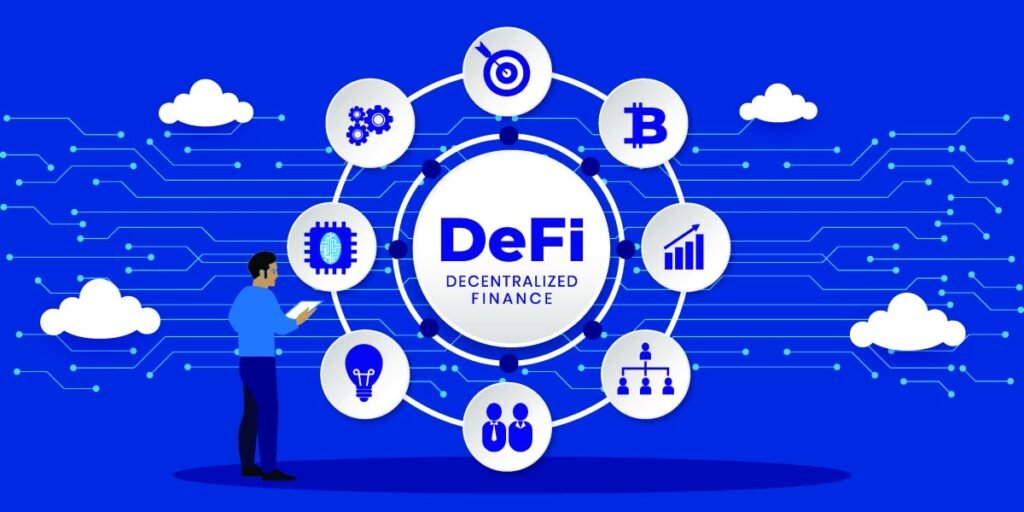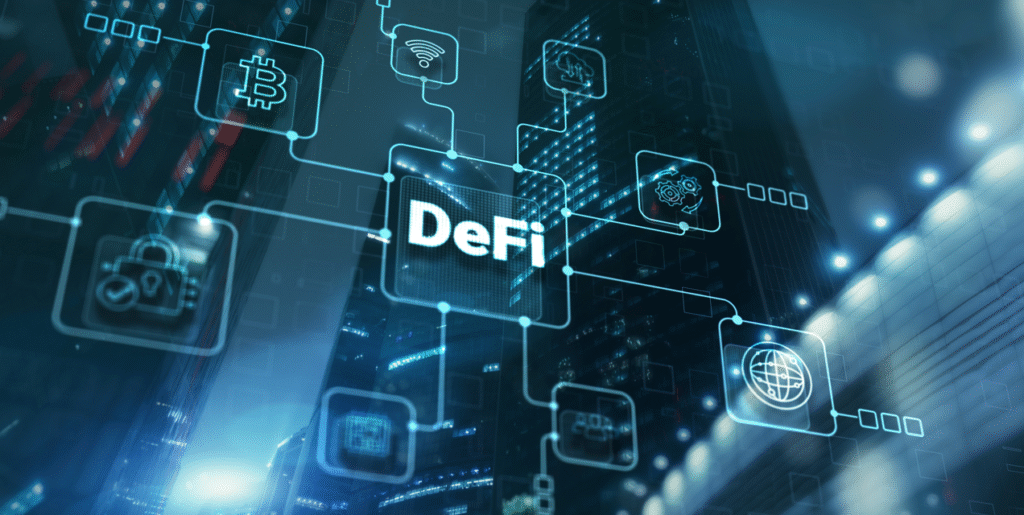
The Future of DeFi in the Blockchain Ecosystem: A Global Financial Revolution
The Dawn of a Decentralized Financial Era
For centuries, the global financial system has been centrally governed by banks, commercial institutions, and regulatory bodies. However, the rise of blockchain technology has introduced an ambitious paradigm shift, fundamentally challenging this centralized structure. At the forefront of this disruption is Decentralized Finance (DeFi).
DeFi is an open, transparent, and permissionless financial ecosystem powered by blockchain technology and smart contracts. It promises to eliminate the need for traditional intermediaries, such as banks, thereby giving users complete control over their assets. Despite the market volatility following its explosive growth in 2020 and 2021, DeFi has firmly established itself as one of the most significant innovations within the broader blockchain ecosystem.
In this comprehensive blog post, we will delve into the core mechanisms of DeFi, examine the current landscape, discuss the critical challenges it faces, and explore the long-term potential and future trends that will shape its role in the global financial system.
Part 1: The Core Foundation and Functionality of DeFi
To truly appreciate the concept of DeFi, one must understand its three fundamental pillars: the blockchain, smart contracts, and the open-source, composable architecture.
1.1. The Role of Blockchain: The Bedrock of Trustlessness
DeFi platforms are built upon decentralized public blockchains, with Ethereum being the most dominant today. The blockchain ensures that transaction data is immutable and replicated across all network participants. This mechanism eliminates the need for trusting a single central authority, which is the single most compelling advantage of DeFi.
1.2. Smart Contracts: Self-Executing Financial Agreements
Smart contracts are lines of code stored on the blockchain that automatically execute the terms of an agreement between two parties. DeFi applications (known as DApps) use these smart contracts to govern all financial services, including lending, borrowing, trading, and liquidity pool management. This automation accelerates transaction speeds and drastically reduces the risk of human error or corruption.
1.3. Composability and the “Money Legos” Analogy
A unique and powerful feature of DeFi is its Composability. Each DeFi protocol acts like a “Lego block” that can be seamlessly combined with other “blocks” to create new and increasingly complex financial products or services. For instance, a lending protocol (like Aave) can be integrated with a decentralized exchange (like Uniswap) to create automated strategies that supply liquidity and earn interest simultaneously. This inherent interoperability is what fuels the rapid pace of innovation in the DeFi ecosystem.
Part 2: The Current DeFi Ecosystem: A Mirror to Traditional Finance
The DeFi ecosystem has rapidly developed to mirror, and in some cases, improve upon traditional financial services, all in a decentralized manner. The key components today include:
| DeFi Sector | Description | Example Protocols |
| Decentralized Exchanges (DEXs) | Enables peer-to-peer crypto trading without a centralized intermediary, relying on Automated Market Makers (AMMs) and liquidity pools. | Uniswap, SushiSwap, Balancer |
| Lending & Borrowing | Users deposit crypto to earn interest or borrow assets by providing collateral. Over-collateralization is the primary mechanism. | Aave, Compound, MakerDAO |
| Derivatives & Synthetic Assets | Platforms for creating tokenized contracts that track the value of underlying assets, including traditional stocks, commodities, or fiat currencies. | Synthetix, dYdX |
| Yield Aggregators | Automatically deploy user funds across various DeFi protocols to optimize and maximize returns (yield farming) with less manual effort. | Yearn Finance, Convex Finance |
| Decentralized Insurance | Provides coverage against financial risks like smart contract failures, hacks, or stablecoin de-pegging, often governed by a DAO. | Nexus Mutual, Covered |
Part 3: The Future Trajectory of DeFi: Key Disruptive Trends
DeFi’s trajectory is driven by several critical innovative trends that will push it toward greater maturity, enhanced security, and closer integration with mainstream finance.
3.1. Layer 2 Scaling and True Interoperability
The Challenge: High transaction fees and network congestion on Layer 1 blockchains (like Ethereum) have limited DeFi’s accessibility.
Future Solutions:
- Layer 2 Dominance: Layer 2 solutions, such as Zero-Knowledge Rollups (ZK-Rollups) (e.g., zkSync, StarkNet) and Optimistic Rollups (e.g., Optimism, Arbitrum), will drastically increase transaction throughput and lower costs. This will make DeFi affordable and practical for everyday use cases globally.
- Cross-Chain Expansion: Protocols like Polkadot and Cosmos, along with sophisticated cross-chain bridge technologies, will enable seamless asset flow and communication between different blockchains. This interoperability will unify liquidity and unlock a much larger playing field for innovation.
3.2. Institutional Adoption and the TradFi-DeFi Convergence
The gap between Traditional Finance (TradFi), such as banks and asset managers, and DeFi is rapidly narrowing. Institutional investors are recognizing the efficiency and transparency DeFi offers.
- Permissioned DeFi Pools: The emergence of “Permissioned” DeFi protocols will allow institutional players to participate while maintaining regulatory compliance. These pools will restrict access to only verified (KYC-compliant) participants, offering a regulated on-ramp for significant institutional capital.
- Tokenization of Real-World Assets (RWA): The future DeFi market will not be limited to cryptocurrencies. It is poised to tokenize multi-trillion-dollar traditional assets, including real estate, corporate bonds, and equities. These Tokenized RWAs can be used as collateral within DeFi protocols, integrating the vast capital of the traditional world into the decentralized ecosystem.
- Central Bank Digital Currencies (CBDCs): As central banks globally pilot their own digital currencies (CBDCs), these regulated digital assets could be integrated as stable, reliable liquidity providers within DeFi platforms, bridging central bank stability with decentralized innovation.
3.3. Advanced Risk Management and Credit Systems
For DeFi to grow beyond over-collateralized lending, it needs sophisticated risk mitigation.
- Maturation of Insurance Protocols: DeFi insurance will evolve to cover not only smart contract bugs but also broader risks like oracle failure, impermanent loss, and governance attacks, significantly boosting user confidence.
- On-Chain Credit Scoring and Under-Collateralized Lending: Current DeFi relies heavily on over-collateralization. Future protocols will leverage Decentralized Identity (DeID) solutions to analyze on-chain data and generate non-custodial On-Chain Credit Scores. This breakthrough will enable under-collateralized or even un-collateralized lending, a cornerstone of traditional banking that will propel DeFi into the mainstream credit market.
3.4. Decentralized Identity (DeID) and Enhanced Privacy
- DeID Solutions: Users will be able to prove specific attributes about themselves (e.g., “I am over 18” or “I am a verified entity”) without revealing their underlying personal data. This will allow DeFi platforms to comply with necessary regulations (KYC/AML) while preserving user privacy and the permissionless nature of the technology.
- Privacy-Focused DeFi: Cryptographic techniques like Zero-Knowledge Proofs (ZKPs) will become standard. ZKPs allow the validity of a transaction to be verified without revealing the data within it (e.g., the amount of the transaction). This will appeal immensely to institutional users and enterprises concerned about proprietary data exposure.
Part 4: The Major Hurdles on DeFi’s Path
Despite its revolutionary potential, DeFi must navigate several significant challenges to achieve mass adoption.
- Regulatory Uncertainty: The pseudonymous and global nature of DeFi has led to calls for tighter regulation from governments worldwide. Overly restrictive or unclear regulatory frameworks pose the biggest threat, potentially stifling innovation and growth.
- Security Vulnerabilities: Smart contract flaws remain a critical vulnerability, leading to significant exploits and fund losses. Rigorous auditing, bug bounties, and formal verification methods are mandatory for security maturity.
- Oracle Vulnerability: DeFi protocols depend on trusted “Oracles” to feed real-world data (like asset prices) onto the blockchain. A failure or exploit of an oracle can destabilize an entire protocol. The development of more robust, decentralized oracle networks (like Chainlink) is crucial.
- User Experience (UX): The current DeFi interfaces are often complex, non-intuitive, and intimidating for non-technical users. Mass adoption requires the development of simple, intuitive, and mobile-friendly interfaces that abstract away the underlying technical complexity of blockchain interactions.
Conclusion: The Ultimate Goal of Financial Inclusion
Decentralized Finance is more than just a technological trend; it represents a profound financial and social movement. The future of DeFi within the blockchain ecosystem points towards a system that promises to grant access to sophisticated financial services to every person on the planet, regardless of their location, social status, or existing bank account status.
The convergence of Layer 2 scaling, the tokenization of traditional assets, and the influx of institutional capital will solidify DeFi’s position, transforming it from a niche platform into a central engine of the global economy. While the regulatory and security challenges are real and demand constant attention, the continuous maturation of smart contracts and the collective innovative spirit of the DeFi community ensure that this is not a passing fad.
In the future, your bank will likely be in your hands—in the form of a fully decentralized wallet. The time for the next financial revolution is now.



